How To Add Color To Subjects In A Painting
Color used to be my enemy. I would fight it and found it to be intimidating and overwhelming at times. But when I finally started to experiment and play with color, I institute a whole new way to express myself through my work.
Y'all see, in painting, certain colors can grab your attention, create a focal point, fade away into shadow, or portray a mood or feeling. All colors are associated with an emotion. In my civilization, red is love, white is pure, yellow is happy. . . yous get the idea.
Quick proclamation - EmptyEasel has created a quicker, easier way for artists to have their own art website. Click here to acquire more and get a simple art website of your own!
Just by using these colors intentionally, you lot can create those same emotions in your paintings. Today I'll be focusing on even so lifes, merely it really doesn't matter what you're painting. Whatsoever creative person can use color to create or alter a mood, in ANY painting.
Here's how:
1. Boost your background with color
Let's offset with the simplest option first. Hands downward, the easiest way to alter the feeling of a painting is by changing your background color.
Take a look at these next three vino bottle paintings. . . their subject matter is quite similar, with a pick of bottles up close (looking more than like snapshots of people than inanimate objects) only the background color is what ultimately tells the story.
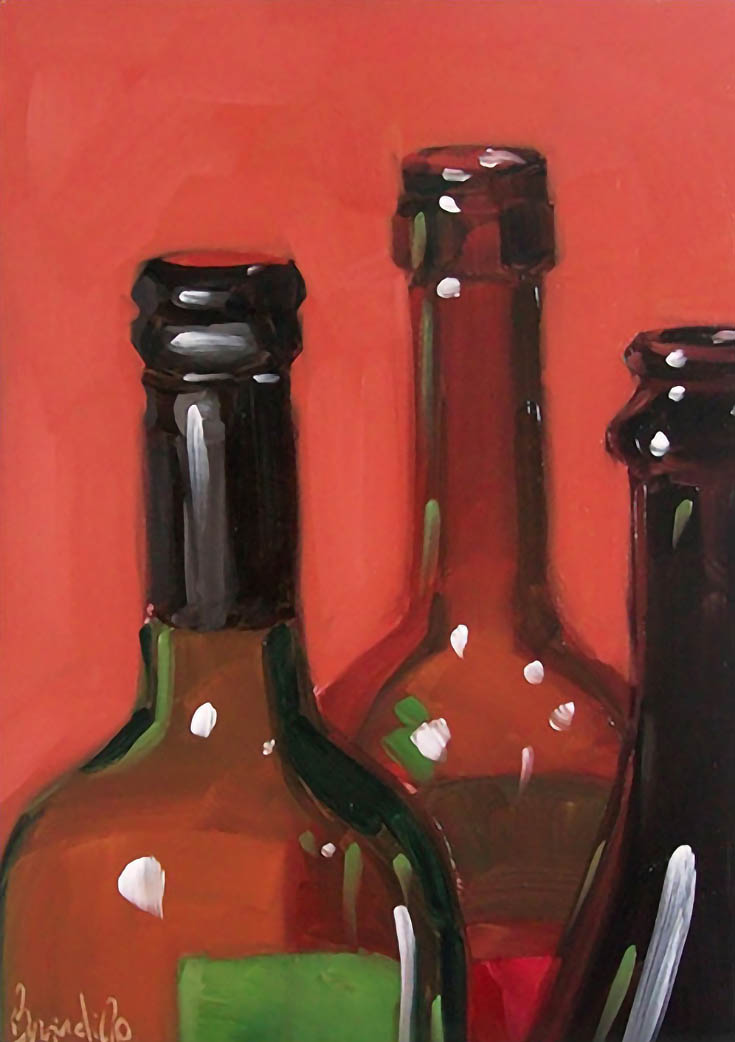
The orange groundwork to a higher place feels warm and inviting, almost like a political party or night out with friends, sort of social and happy. Compare that to the gray background below. It feels well-nigh somber, and very even so, like a serious business coming together.
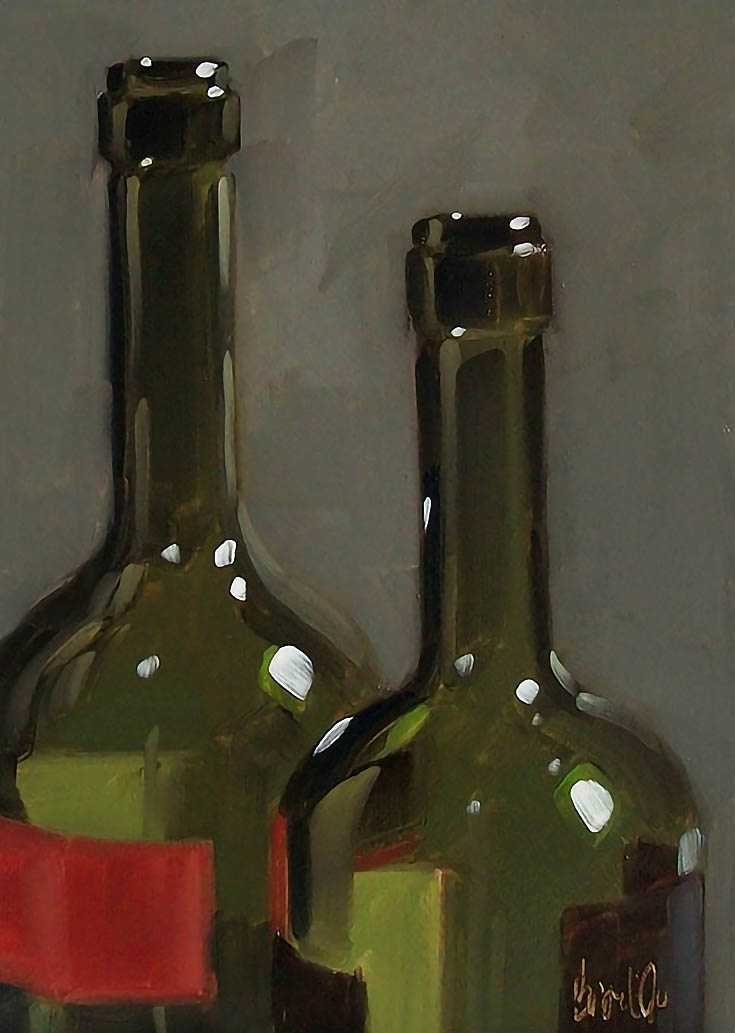
Then here'south a teal background which feels both trendy and sophisticated, sort of fashionable and fun.

That's a wide range of feeling from three simple, different groundwork colors! And here'southward the good news. . . for near paintings, the groundwork color is extremely easy to modify. If you don't similar your original color, just wipe information technology out or paint over it with another more pleasing colour.
Better nonetheless, set upwards your composition and first past doing several very small studies, each 1 with a different color combination. The right one will jump out at y'all, and save you lot tons of time.
2. Try an unusual color for your subject matter
The color of your field of study can really make a statement. Your subject, for the near part, is your focal signal and usually at that place are many color options to choose from. Yous tin e'er change from red to green apples, or scarlet wine to white wine, simply. . . why finish there? Arbitrary colour tin can be a lot More fun.
Arbitrary colors are whatever colors that are selected and applied without reference to those found in reality. In other words—use a completely different or unnatural color to shake things upwards a bit!
These gerbera daisy paintings are a skilful example. The orange daisy is a natural, bright color that makes yous feel sunny and happy.
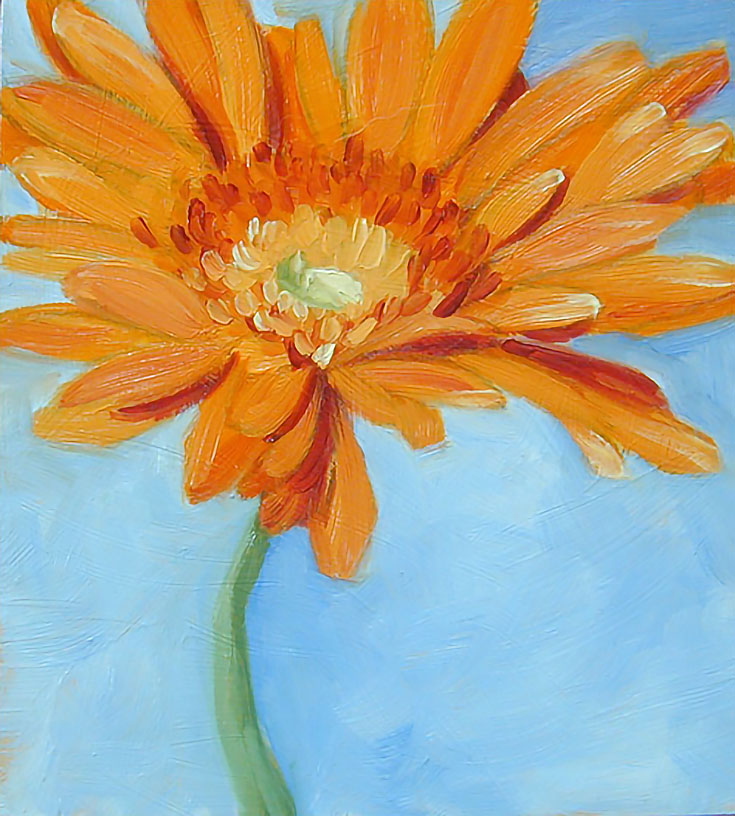
But, switch the daisy to a dark nigh black color and that feeling changes from happy to moody in a split second:
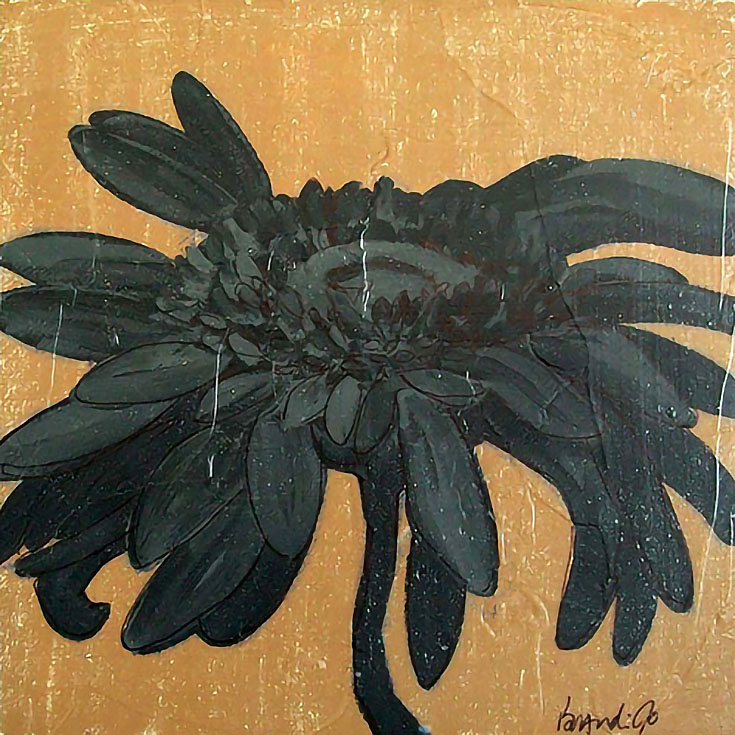
Using such an unnatural color for the daisy drastically transforms the way the viewer feels almost the painting. This is a fun, inventive mode to play with color, and information technology certainly makes a statement!
3. Always set the mood with lighting
Lighting is important and can actually set the scene for a painting. To light a nonetheless life y'all tin use natural light from a window, a spotlight and fifty-fifty candlelight, all of which create a unlike feeling in the finished piece. Even the intensity level of light will alter the feeling of a painting.
A unproblematic nevertheless life of red roses, for example, bathed in soft lite, feels velvety, romantic, and loving.
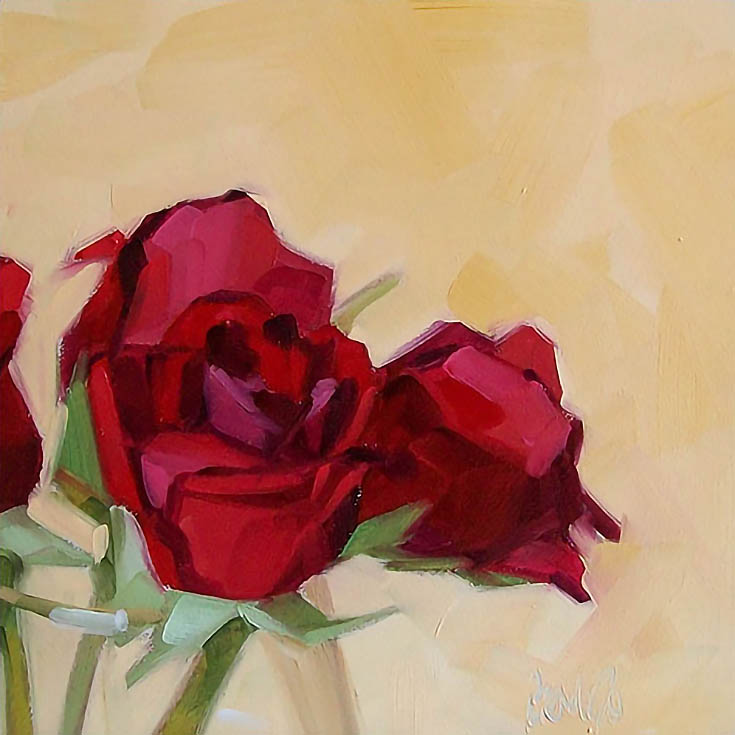
Add a more intense, direct light that casts a shadow and the flowers look like they are in a spotlight. . . somewhat fragile and vulnerable, in fact.
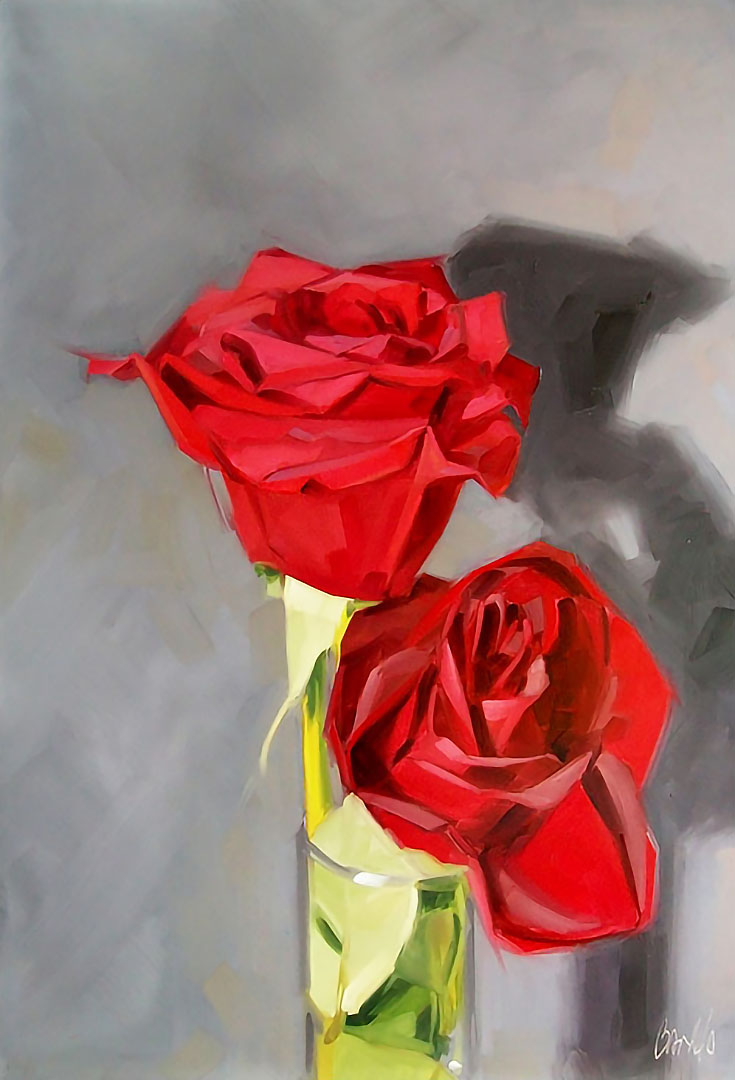
Utilize a dimmer light that casts more shadow and in that location'south a sense of sadness, and hopelessness. The options are endless. . . and fascinating to explore.

Of course, these are just three ways that color tin can exist used to create intensity and and feeling in your paintings. Experience free to use these tips or see what you tin come upwards with for yourself. . . the more than yous paint, the better you'll exist able to friction match colour to mood, and create masterpieces of your ain.
Happy painting!

Annotation: You may likewise be interested in EE's pace-by-stride drawing guide for artists. Click below to learn more!

This post may incorporate affiliate links.
How To Add Color To Subjects In A Painting,
Source: https://emptyeasel.com/2013/11/11/3-unusual-ways-to-paint-with-color-and-make-your-paintings-pop/
Posted by: hickscolithat.blogspot.com


0 Response to "How To Add Color To Subjects In A Painting"
Post a Comment